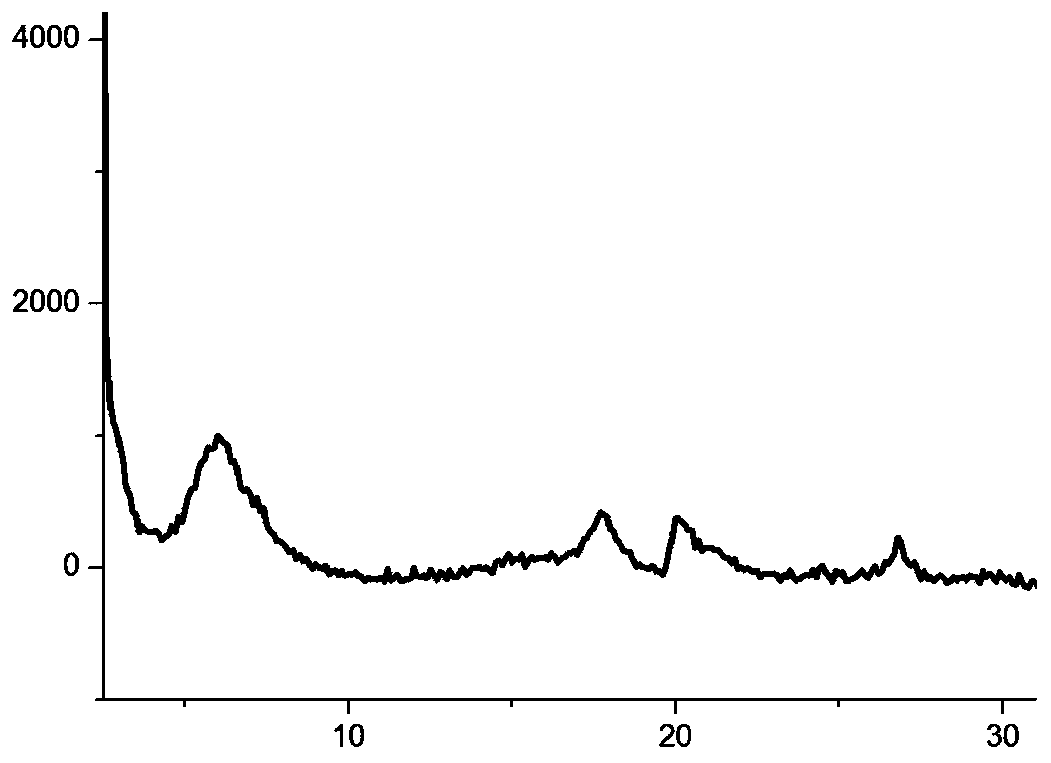A kind of corona-resistant polyimide-based composite material and preparation method thereof
A polyimide-based, composite material technology, applied in the field of insulating materials, can solve the problems of reduced mechanical properties of composite materials, reduced corona resistance uniformity of thin films, and reduced corona resistance performance, etc. Functional effect, the effect of improving corona resistance
- Summary
- Abstract
- Description
- Claims
- Application Information
AI Technical Summary
Problems solved by technology
Method used
Image
Examples
preparation example Construction
[0055] The invention provides a method for preparing a corona-resistant polyimide-based composite material, which is characterized in that it comprises the following steps:
[0056] a) heating and reacting the layered silicate and the organic intercalation agent in the first solvent to obtain the layered silicate modified by organic intercalation;
[0057] In situ polymerization of the layered silicate modified by organic intercalation and the polymerized monomer of polyimide in a second solvent to obtain a mixed solution I;
[0058] b) performing in-situ polymerization reaction of inorganic nanoparticles and polymerized monomers of polyimide in a third solvent to obtain mixed solution II;
[0059] c) After mixing the mixed solution I and the mixed solution II, heat treatment is performed to obtain a polyimide-based composite material;
[0060] The layered silicate is an aluminosilicate layered material;
[0061] The organic intercalation agent is selected from one or more o...
Embodiment 1
[0148] Add aniline hydrochloride (2.29g, 0.022mol) and sodium montmorillonite (10.0g, 0.01mol) into water (100mL), heat to 100°C, and react for 12h. After that, the solid matter was filtered out and dried to obtain aniline intercalation modified montmorillonite with a yield of 95%. Gained sample is carried out wide-angle X-ray diffraction test, the result is as follows figure 1 as shown, figure 1 It is the X-ray diffraction pattern of aniline intercalation modified montmorillonite in Example 1. It can be seen that there is an obvious characteristic peak at 2θ=6.5°, and the interlayer distance is enlarged to 1.38nm calculated by combining with the Bragg equation.
[0149] The resulting aniline intercalation modified montmorillonite (0.45g) and diphenyl ether diamine (2.00g, 10.0mmol) were added to N,N-dimethylacetamide (23g), stirred at room temperature, and then added pyromellitic Formic dianhydride (2.18 g, 10.0 mmol) was stirred at room temperature for 24 hours to obtain ...
Embodiment 2
[0153] Add 4-hydroxyaniline hydrochloride (3.18g, 0.023mol) and sodium montmorillonite (10.0g, 0.01mol) into water (100mL), heat to 100°C, and react for 12h. After that, the solid matter was filtered out and dried to obtain 4-hydroxyaniline intercalated modified montmorillonite with a yield of 97%. Gained sample is carried out wide-angle X-ray diffraction test, the result is as follows figure 2 as shown, figure 2 It is the X-ray diffraction pattern of 4-hydroxyaniline intercalation modified montmorillonite in Example 2. It can be seen that there is an obvious characteristic peak at 2θ=5.1°, and the interlayer distance is enlarged to 1.73nm calculated by combining with the Bragg equation.
[0154] The resulting 4-hydroxyaniline intercalated modified montmorillonite (0.50g) and diphenyl ether diamine (2.00g, 10.0mmol) were added to N,N-dimethylacetamide (23g), stirred at room temperature, and then added Biphenyldianhydride (2.94g, 10.0mmol) was stirred at room temperature f...
PUM
| Property | Measurement | Unit |
|---|---|---|
| thickness | aaaaa | aaaaa |
Abstract
Description
Claims
Application Information
 Login to View More
Login to View More - R&D
- Intellectual Property
- Life Sciences
- Materials
- Tech Scout
- Unparalleled Data Quality
- Higher Quality Content
- 60% Fewer Hallucinations
Browse by: Latest US Patents, China's latest patents, Technical Efficacy Thesaurus, Application Domain, Technology Topic, Popular Technical Reports.
© 2025 PatSnap. All rights reserved.Legal|Privacy policy|Modern Slavery Act Transparency Statement|Sitemap|About US| Contact US: help@patsnap.com



